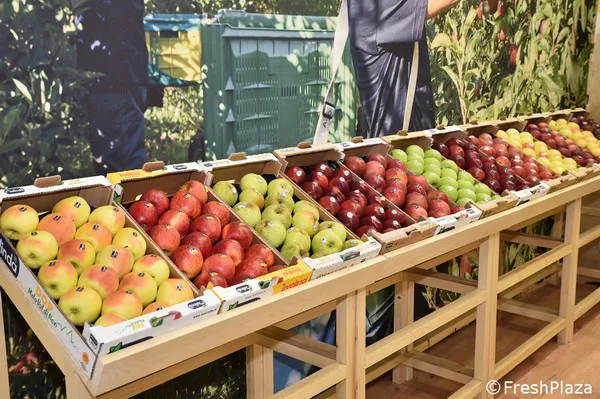On the occasion of the start of Interpoma, Assomela has published the updated production data for 2022. Although they are not definitive yet, especially when it comes to the late varieties, they are enough to get a clear picture of the situation.
The gross Italian production is 2,053,586 ton, i.e. identical to 2021 and only slightly lower than what estimated in August. However, there are fewer apples destined to fresh consumption than envisaged and compared with last year (1,761,544 tons). New record for organic apples, which should exceed 220,000 tons.
As for the production areas, Alto Adige and Trentino have lost 9 and 8% compared with 2021. Friuli-Venezia Giulia and Lombardy have also lost a considerable percentage (-18% and -15%), while the Veneto has returned to its average production and Emilia-Romagna has reached an excellent level similar to 2018. Piedmont has exceeded 240,000 tons, confirming itself as the most productive region after Trentino-Alto Adige.
When it comes to the single varieties, very interesting elements can be noticed.
Golden Delicious have dropped to 599,904 tons, only 50,000 tons more than the lowest production ever in 2017. Red Delicious have grown, but they still far from their record volumes, while Gala are slightly lower than 2021. The production of Granny Smith was higher than average while Cripps Pink and the new varieties have peaked at 180,000 tons. Fuji have recorded similar values than last year at 154,000 tons.
As mentioned above, it is important to stress that a percentage higher than average will not be destined to the fresh market and cannot be sold as first-category produce. This is true especially for the Gala variety and for early varieties in general, as they were affected by the excessive heat during the last phenological phases and during harvesting. A "shorter" season is expected for these varieties.

Quality for the later varieties and hill crops is medium-good, as they were not as affected by the heat.
As for stocks, those in Trentino-Alto Adige on November 1st were the lowest of the decade (except for 2017) for table apples and in particular for Golden Delicious: below 430,000 tons, i.e. 160,000 tons less than the average since 2015 (year since when Assomela has been recording November stock).
Destocking is proceeding rather regularly, also considering the warm weather that has not helped consumption in October, and sales overseas have also restarted though costs remain very high.
The domestic situation forms part of a European framework where part of the fruit may not be harvested, especially in Poland, due to the lack of seasonal workers. In some situations, low-quality apples might not even be stored to avoid having to pay the high energy costs. This could favor higher quality fruits already from the next few weeks.
In addition to the additional costs that have a direct impact for producers, the higher prices of energy and of the materials used for commercialization (e.g. packaging) remain worrying as they keep impacting processing costs and reducing margins.
